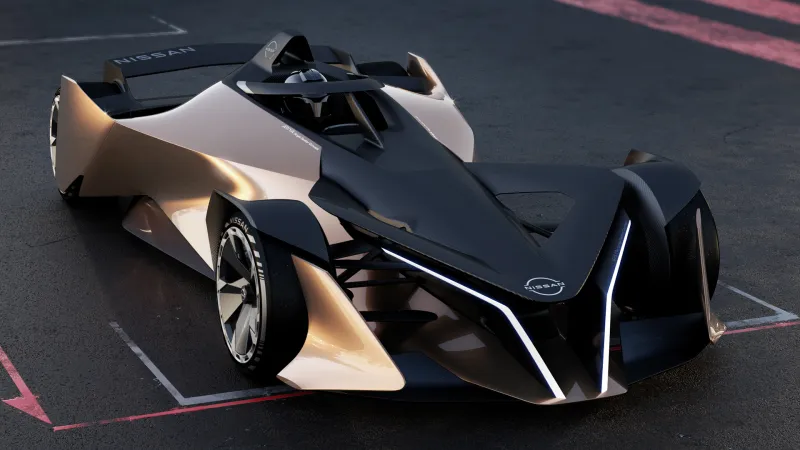An important step toward incorporating sustainability into motorsports was taken by NASCAR when it debuted its first electric racer prototype during the Chicago Street Race. In partnership with ABB, Chevrolet, Ford, and Toyota, this $1.5 million electric crossover showcases the possibilities of EVs and bolsters the environmental goals of the NASCAR Impact program. This is an attempt to determine fan interest in electric racing, even though it does not necessarily mean a quick switch from gasoline-powered race vehicles. Riley Nelson, Head of Sustainability at NASCAR, stressed the need to show electrification in racing and electric cars in general as thrilling, pleasurable, and approachable.
The racing vehicles used in NASCAR today have little in common with the cars that people drive on the road. However, the association between racing vehicles and regular traffic is essential to the “race on Sunday, sell on Monday” philosophy. Sedans and coupes, which were once the default daily drivers, are now being replaced by crossover SUVs. This electric crossover SUV concept might bring the series more in line with the idea of racing vehicle shapes that kids can recognize in their driveways. Despite this, NASCAR is not abandoning V8 engines just yet.
The debut of the ABB NASCAR EV Prototype at the Chicago Street Race is a significant milestone in the series’ journey towards sustainability. Powered by three motors (one in the front and two in the rear) and a 78-kWh battery, the all-wheel-drive NASCAR BEV can produce 1,000 kW of peak power, equivalent to a little more than 1,300 horsepower.
The EV prototype, driven by NASCAR driver David Ragan, showcases NASCAR’s commitment to exploring and integrating sustainable technologies within the sport. The prototype’s steering, suspension, brakes, and wheels are all derived from a NASCAR Cup Series car, built on a Next Gen chassis. Although the vehicle has NASCAR stickers on it, it does not look like a traditional oval dominator. However, underneath its SUV-shaped sheet metal, it shares similarities with both Next Gen cars and the Garage 56 entries at the 24 Hours of Le Mans.
By 2028, NASCAR intends to transition all of its racetracks to 100% renewable energy and provide EV charging stations. Achieving net-zero operating emissions is NASCAR’s goal for 2035. These programs are a part of a larger endeavor to reduce the environmental impact of motorsports and show leadership in matching global sustainability trends. ABB, a pioneer in sustainability and technology and a founding partner of NASCAR Impact, collaborated with the development of the electric trial. The racing series’ attempts to support social projects, community involvement, and sustainability are collectively referred to as NASCAR Impact. Achieving a net-zero carbon impact by 2035 is the main objective it oversees for NASCAR.
The front office is aware that some racing fans are opposed to electrification and have zero interest in it on the road and on the track. However, John Probst, NASCAR senior vice president of racing development, suggests there’s always another side to that coin. He told CNN that motorsports fans are EV curious, according to NASCAR research. The EV prototype is one way to start and continue that conversation. By showcasing the capabilities and performance of EVs in a racing context, NASCAR hopes to build excitement and interest among its fanbase.
Race cars are generally cars and not crossovers or SUVs, but new vehicle sales flip that script. The EV Prototype design was a collaboration with NASCAR OEM partners Chevy, Ford, and Toyota—automakers who have extensive experience with family-friendly crossovers. This multi-partner collaboration is why the NASCAR prototype features a “generic CUV body.” Nevertheless, showcasing a race-ready performance version of what people buy anyway could give soccer moms and dads more clout during school drop-offs.
NASCAR has long endeavored to maintain relevancy, and modernization is key to that success. The Next Gen car, which debuted in 2022, not only equalized the vehicles but also allowed its quality, dependability, and reliability to translate directly into commuter cars. The racing fuel also changed to its current mix of gasoline (85%) and ethanol (15%), but it is expected to evolve into a more sustainable fuel source in the future.
NASCAR’s approach to incorporating EV technology into its racing series highlights the evolving landscape of motorsports, where traditional internal combustion engines are gradually making way for electric and hybrid powertrains. This shift is driven by a combination of regulatory pressures, environmental concerns, and advancements in battery technology and electric powertrains.
David Ragan’s role in driving the prototype provides a practical test of the vehicle’s performance and showcases its capabilities to fans and stakeholders. Ragan’s feedback and the data collected from these tests will be crucial in refining the technology and making necessary adjustments to improve performance and reliability. The tunable powertrain of the electric crossover, capable of delivering 1,000 kW at peak power, demonstrates the potential for high-performance electric racing cars. This level of power output ensures that the electric prototype can compete with traditional gasoline-powered race cars in terms of speed and acceleration, addressing one of the main concerns among racing enthusiasts about the transition to electric vehicles.
Achieving net-zero operating emissions by 2035 is an ambitious goal that will require significant changes in how NASCAR operates. This will likely involve not only the transition to electric and hybrid vehicles but also changes in logistics, transportation, and other operational aspects to reduce carbon emissions. NASCAR’s sustainability plans reflect a comprehensive approach to addressing environmental impact and promoting sustainable practices within the motorsport industry.
A testament to NASCAR’s dedication to investigating and incorporating sustainable technologies into the sport is the electric prototype’s debut at this esteemed event. Along with being a demonstration of technological innovation, the electric prototype is also a calculated attempt to gauge public opinion and perhaps even change it in favor of electric racing.
If you like the article please follow on THE UBJ.
